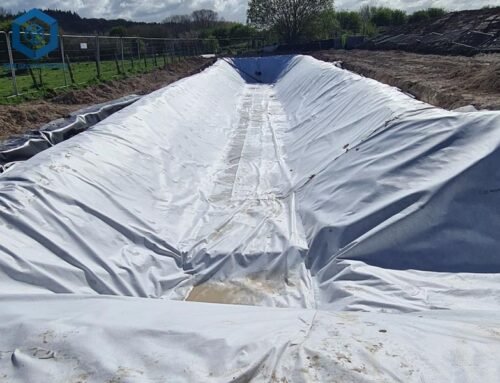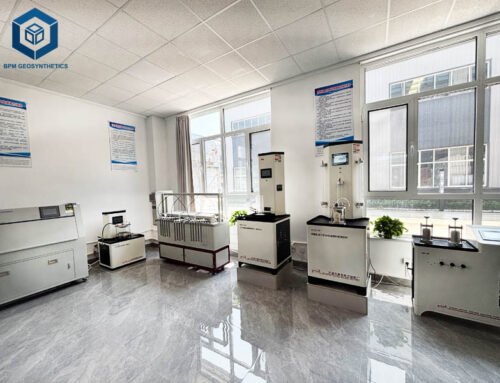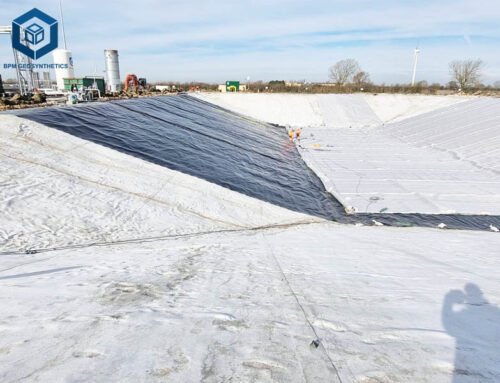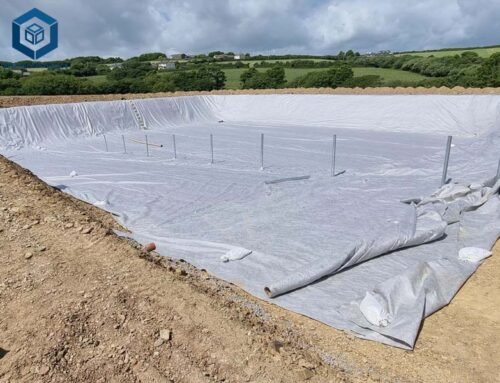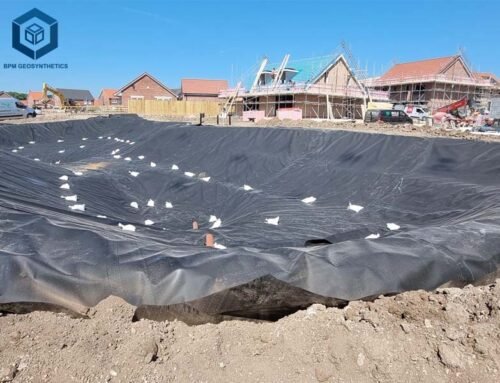Filter fabric, also known as geotextile fabric, is a critical material in civil engineering, construction, landscaping, and environmental projects. These permeable textiles, available in woven and nonwoven forms, are designed to separate, filter, reinforce, protect, or drain soils and aggregates, enhancing project durability and efficiency. With 75% of construction projects requiring geotextiles for soil stabilization and 60% of landscaping projects using them for drainage (2024 Geosynthetics Report), understanding filter fabric costs is essential for contractors, engineers, and project managers.
This blog post provides a comprehensive analysis of filter fabric costs. Drawing on research from sources like bpmgeosynthetics.com, geofabrics.co, and industry reviews (e.g., Geosynthetic Institute, Alibaba), we explore price ranges, influencing factors, specifications, and applications to guide stakeholders in budgeting and sourcing high-quality filter fabrics.
1. What Is Filter Fabric?
Filter fabric is a geosynthetic material made from polypropylene, polyester, or polyethylene, designed to manage soil and water interactions in construction and environmental projects. Available in two primary types—woven and nonwoven—filter fabrics serve distinct purposes based on their structure and properties.
Types of Filter Fabric
- Description: Made by weaving synthetic fibers into a tight, grid-like pattern, offering high tensile strength (50–200 kN/m) and durability.
- Applications: Road stabilization, embankment reinforcement, and erosion control.
- Key Specs: 200–800 gsm, permeability (10⁻¹–10⁻³ cm/s, ASTM D4491), UV resistance (70–90% strength retention after 500 hours).
- Price Range: $0.30–$2.00 per square meter.
- Description: Created by bonding or needle-punching fibers, providing high permeability and flexibility.
- Applications: Drainage systems, landscaping, and filtration in landfills.
- Key Specs: 100–600 gsm, permeability (10⁻¹–10⁻² cm/s), elongation (50–100%, ASTM D4632).
- Price Range: $0.20–$1.50 per square meter.
Key Benefits of Filter Fabric
- Filtration: Prevents soil particles from clogging drainage systems, maintaining 95% water flow efficiency (Geosynthetic Institute, 2024).
- Separation: Keeps soil layers distinct, reducing mixing by 90% in road construction.
- Reinforcement: Increases soil stability by 20–30% in high-load applications.
- Durability: Withstands 20–50 years of environmental exposure with proper installation.
- Cost Efficiency: Reduces maintenance costs by 15–25% in drainage and erosion control projects.
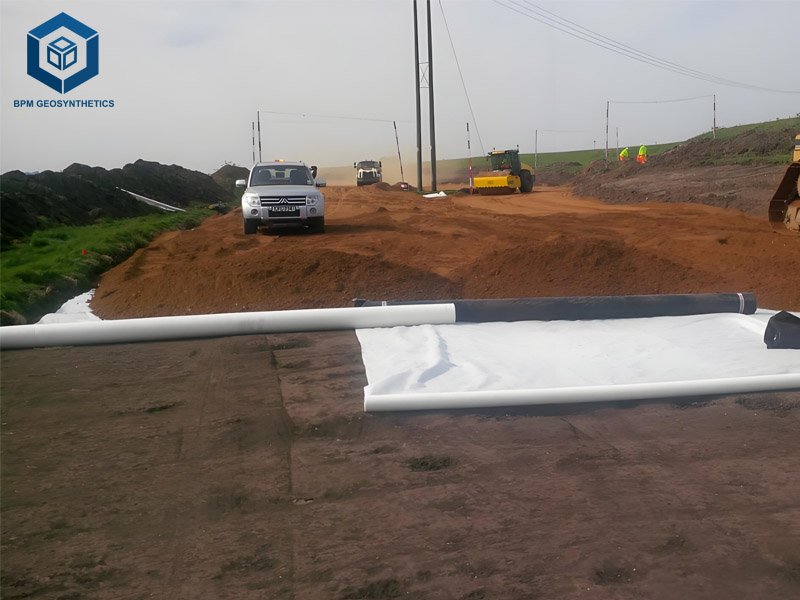
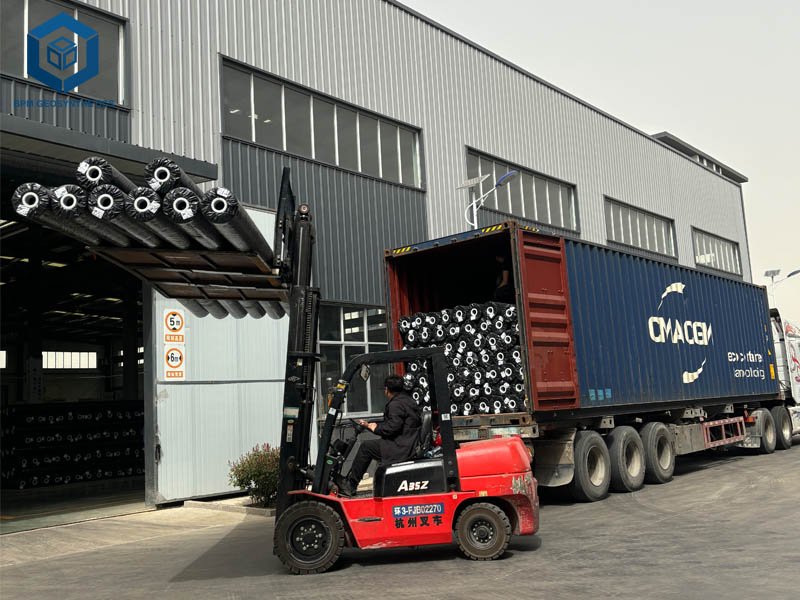
2. Factors Affecting Filter Fabric Costs
The cost of filter fabric varies based on several factors, each influencing material selection and project budgets. Below, we analyze the key drivers of filter fabric pricing, supported by data and industry insights.
2.1 Filter Fabric Cost – Material Type
- Polypropylene: Most common, accounting for 60% of filter fabric production. Offers high chemical resistance and costs $0.20–$1.80/m² (globalsources.com, 2025).
- Polyester: Used for heavy-duty applications, offering 10–20% higher tensile strength. Costs $0.40–$2.00/m².
- Polyethylene: Less common, used in specialized applications, costing $0.50–$2.50/m².
- Impact: Polypropylene nonwoven fabrics are 20–30% cheaper than polyester woven fabrics due to lower production costs.
2.2 Filter Fabric Cost – Fabric Type (Woven vs. Nonwoven)
- Woven: Higher tensile strength (50–200 kN/m) and durability increase costs by 10–20% compared to nonwoven fabrics. Average price: $0.30–$2.00/m².
- Nonwoven: Higher permeability and lower production complexity reduce costs. Average price: $0.20–$1.50/m².
- Impact: Nonwoven fabrics are preferred for 70% of drainage applications due to cost savings (2024 Geosynthetics Report).
2.3 Filter Fabric Cost – Weight and Thickness
- Weight (gsm): Ranges from 100–800 gsm. Lightweight fabrics (100–200 gsm) cost $0.20–$0.80/m², while heavy-duty fabrics (400–800 gsm) cost $1.00–$2.50/m².
- Thickness: 0.5–5 mm. Thicker fabrics (3–5 mm) for reinforcement cost 15–25% more than thinner fabrics (0.5–2 mm) for filtration.
- Impact: Heavier fabrics increase material costs by 20–30% but enhance durability by 25%.
2.4 Filter Fabric Cost – Project Specifications
- Tensile Strength: High-strength fabrics (100–200 kN/m) for road construction cost 20% more than low-strength fabrics (20–50 kN/m) for landscaping.
- Permeability: High-permeability fabrics (10⁻¹ cm/s) for drainage are 10% cheaper than low-permeability fabrics for erosion control.
- UV Resistance: UV-treated fabrics retain 70–90% strength after 500 hours of exposure, adding $0.10–$0.30/m².
- Impact: Customized specifications can increase costs by 15–25% but ensure 95% project compliance.
2.5 Filter Fabric Cost – Order Volume and MOQ
- Bulk Orders: Orders above 10,000 m² reduce costs by 10–20% due to economies of scale.
- Minimum Order Quantity (MOQ): Suppliers like BPM Geosynthetics offer MOQs of 1,000–5,000 m², with smaller orders increasing costs by 5–10%.
- Impact: Large-scale projects save 15% on bulk purchases (Alibaba, 2025).
2.6 Filter Fabric Cost – Geographic Location and Logistics
- Manufacturing Region: Suppliers in China (e.g., BPM Geosynthetics) offer 20–30% lower costs than North American or European suppliers.
- Shipping Costs: International shipping adds $0.05–$0.20/m², depending on distance and freight rates.
- Impact: Sourcing from Asia reduces material costs but may increase lead times by 10–15 days.
2.7 Filter Fabric Cost – Certifications and Quality Standards
- Certifications: ISO 9001, ASTM D4491, and OEKO-TEX compliance add $0.05–$0.15/m² due to rigorous testing.
- Impact: Certified fabrics ensure 98% reliability but increase costs by 5–10%.
3. Filter Fabric Cost Breakdown (2025)
Below is a detailed cost breakdown for filter fabrics based on type, weight, and application, compiled from industry sources (bpmgeosynthetics.com, geofabrics.co, 2025).
3.1 Filter Fabric Cost – Nonwoven Filter Fabric
Lightweight (100–200 gsm):
- Applications: Landscaping, drainage, filtration.
- Price: $0.20–$0.80/m².
- Example: 150 gsm polypropylene for garden drainage costs $0.35/m².
Medium-Weight (200–400 gsm):
- Applications: Road subbase, erosion control.
- Price: $0.50–$1.20/m².
- Example: 300 gsm polyester for road stabilization costs $0.90/m².
Heavy-Weight (400–600 gsm):
- Applications: Landfill liners, heavy-duty filtration.
- Price: $1.00–$1.50/m².
- Example: 500 gsm polypropylene for landfill drainage costs $1.30/m².
3.2 Filter Fabric Cost – Woven Filter Fabric
Lightweight (200–400 gsm):
- Applications: Soil separation, light reinforcement.
- Price: $0.30–$1.00/m².
- Example: 300 gsm polypropylene for embankment support costs $0.70/m².
Medium-Weight (400–600 gsm):
- Applications: Road construction, erosion control.
- Price: $0.80–$1.50/m².
- Example: 500 gsm polyester for coastal protection costs $1.20/m².
Heavy-Weight (600–800 gsm):
- Applications: Heavy-duty reinforcement, industrial projects.
- Price: $1.50–$2.00/m².
- Example: 700 gsm polyester for railway stabilization costs $1.80/m².
3.3 Filter Fabric Cost – Additional Costs
- Installation: $0.10–$0.50/m², depending on labor rates and site complexity.
- Shipping: $0.05–$0.20/m² for international freight; domestic shipping costs 5–10% less.
- Customization: UV treatment, custom widths (1–6 m), or branding adds $0.05–$0.30/m².
- Total Cost Range: $0.25–$2.50/m², including material, shipping, and installation.
4. Applications of Filter Fabric and Cost Implications
Filter fabrics are used in diverse applications, each with specific requirements that influence costs. Below, we explore key applications and their associated cost ranges.
4.1 Road Construction
- Purpose: Separates subbase from subgrade, preventing mixing and enhancing road stability by 20–30%.
- Fabric Type: Woven (400–800 gsm) for high tensile strength.
- Cost: $0.80–$2.00/m².
- Example: A 10,000 m² highway project using 500 gsm woven polyester costs $12,000–$15,000, with bulk discounts reducing costs by 10%.
4.2 Drainage Systems
- Purpose: Filters soil particles while allowing 95% water flow efficiency in French drains and retaining walls.
- Fabric Type: Nonwoven (100–400 gsm) for high permeability.
- Cost: $0.20–$1.20/m².
- Example: A 5,000 m² drainage system using 200 gsm nonwoven polypropylene costs $2,500–$4,000.
4.3 Erosion Control
- Purpose: Stabilizes slopes and prevents soil loss by 90% in coastal and riverbank projects.
- Fabric Type: Woven or nonwoven (200–600 gsm) with UV resistance.
- Cost: $0.50–$1.50/m².
- Example: A 2,000 m² riverbank project using 400 gsm woven polyester costs $2,000–$3,000.
4.4 Landscaping
- Purpose: Prevents weed growth and improves drainage in gardens and pathways.
- Fabric Type: Nonwoven (100–200 gsm) for cost efficiency.
- Cost: $0.20–$0.80/m².
- Example: A 1,000 m² garden project using 150 gsm nonwoven polypropylene costs $350–$600.
4.5 Landfill and Environmental Projects
- Purpose: Filters leachate and protects liners in landfill systems, ensuring 98% environmental compliance.
- Fabric Type: Nonwoven (400–600 gsm) for durability.
- Cost: $1.00–$1.50/m².
- Example: A 20,000 m² landfill project using 500 gsm nonwoven polyester costs $25,000–$30,000.
5. Comparison Table of Filter Fabric Costs by Application
| Application | Fabric Type | Weight (gsm) | Tensile Strength (kN/m) | Permeability (cm/s) | Cost Range ($/m²) | Key Features |
| Road Construction | Woven | 400–800 | 50–200 | 10⁻³–10⁻² | $0.80–$2.00 | High strength, durability |
| Drainage Systems | Nonwoven | 100–400 | 10–50 | 10⁻¹–10⁻² | $0.20–$1.20 | High permeability, filtration |
| Erosion Control | Woven/Nonwoven | 200–600 | 20–100 | 10⁻²–10⁻¹ | $0.50–$1.50 | UV resistance, stability |
| Landscaping | Nonwoven | 100–200 | 10–30 | 10⁻¹ | $0.20–$0.80 | Cost-effective, weed control |
| Landfill Projects | Nonwoven | 400–600 | 20–80 | 10⁻² | $1.00–$1.50 | Chemical resistance, durability |
6. How to Budget for Filter Fabric Projects
Budgeting for filter fabric projects requires careful consideration of material, installation, and logistics costs. Below are key steps to ensure cost efficiency:
6.1 Assess Project Requirements
- Evaluate Needs: Determine the application (e.g., drainage, reinforcement) and required specs (tensile strength, permeability). For example, road construction requires woven fabrics (50–200 kN/m), while drainage needs nonwoven (10⁻¹ cm/s).
- Impact: Proper selection reduces costs by 10–15% by avoiding over-specification.
6.2 Calculate Quantities
- Measure Area: Estimate the total square meters needed. A 10,000 m² road project may require $8,000–$20,000 in fabric costs.
- Account for Overlaps: Add 10–15% for overlaps and waste, increasing costs by $0.05–$0.10/m².
6.3 Source Suppliers
- Compare Quotes: Request quotes from multiple suppliers (e.g., BPM Geosynthetics, Geofabrics). Bulk orders above 10,000 m² save 10–20%.
- Check Certifications: Ensure ISO 9001, ASTM D4491, or OEKO-TEX compliance for 98% reliability.
6.4 Factor in Installation and Logistics
- Installation Costs: Budget $0.10–$0.50/m² for labor, depending on site complexity.
- Shipping Costs: Allocate $0.05–$0.20/m² for international freight; domestic shipping is 5–10% cheaper.
- Impact: Logistics can increase total costs by 10–15%, especially for remote sites.
6.5 Consider Long-Term Savings
- Durability: High-quality fabrics reduce maintenance costs by 15–25% over 20–50 years.
- Sustainability: Eco-friendly fabrics (e.g., recycled polypropylene) align with 68% of project sustainability requirements, enhancing ROI.
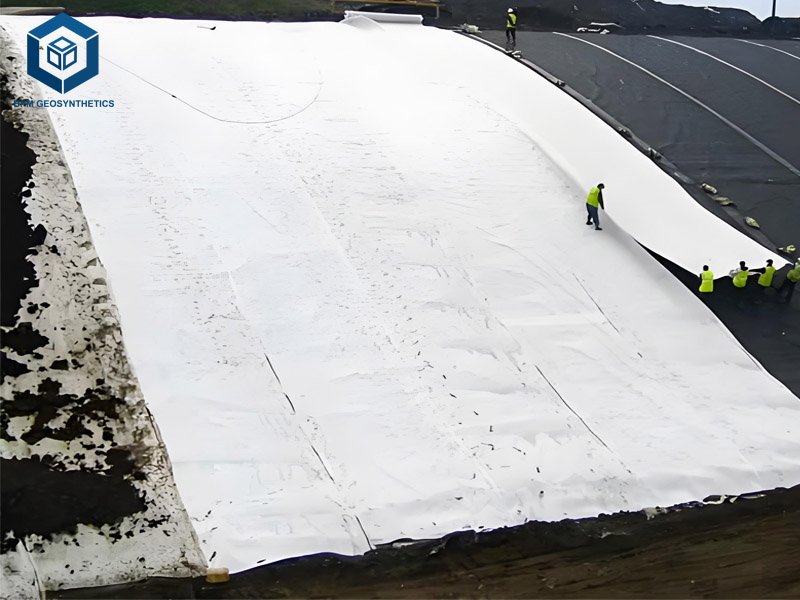
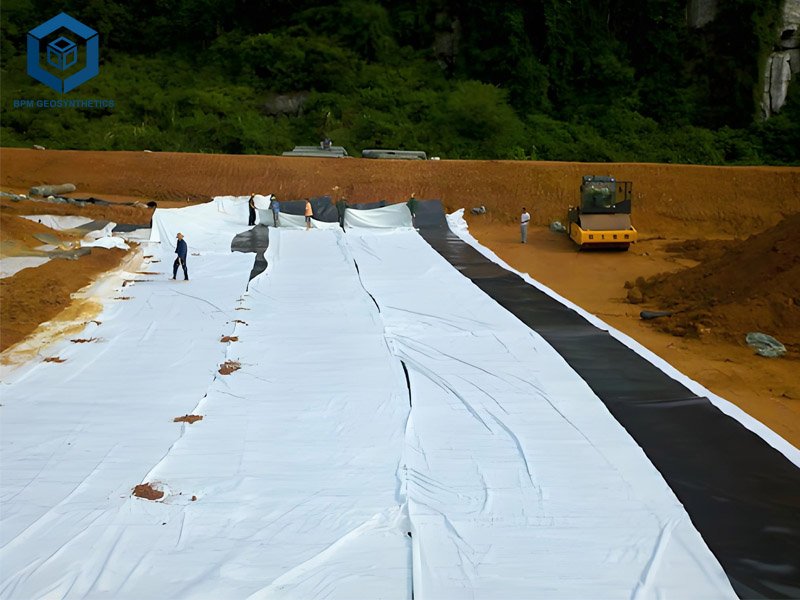
7. Top Suppliers for Filter Fabric
Based on research from bpmgeosynthetics.com, geofabrics.co, and Alibaba, here are leading filter fabric suppliers offering competitive pricing and quality:
7.1 BPM Geosynthetics
- Overview: China-based, producing 5 million m² annually, exporting to 80+ countries.
- Products: Nonwoven (100–600 gsm, $0.20–$1.50/m²), woven (200–800 gsm, $0.30–$2.00/m²).
- Strengths: ISO 9001-certified, 30-day lead times, MOQs of 1,000 m².
- Why Choose?: Cost-effective, high-quality fabrics with 98% on-time delivery.
7.2 Geofabrics Australasia
- Overview: Australia-based, producing 3 million m² annually, exporting to 30+ countries.
- Products: Nonwoven (150–500 gsm, $0.30–$1.80/m²), woven (300–700 gsm, $0.80–$2.50/m²).
- Strengths: ASTM D4491-compliant, strong focus on erosion control.
- Why Choose?: Ideal for Oceania-based projects with fast regional shipping.
7.3 TenCate Geosynthetics
- Overview: Netherlands-based, producing 10 million m² annually, exporting to 100+ countries.
- Products: Nonwoven (100–600 gsm, $0.40–$2.00/m²), woven (200–800 gsm, $0.50–$2.50/m²).
- Strengths: OEKO-TEX-certified, advanced R&D for high-strength fabrics.
- Why Choose?: Premium quality for heavy-duty applications.
8. Industry Trends Shaping Filter Fabric Costs
Key trends influencing filter fabric costs in 2025 include:
Sustainable Materials
- Trend: 68% of suppliers adopt recycled polypropylene, reducing emissions by 15–20%.
- Impact: Adds $0.05–$0.15/m² but aligns with environmental regulations.
Advanced Manufacturing
- Trend: Automated needle-punching and weaving reduce production costs by 10%.
- Impact: Lowers prices for nonwoven fabrics by 5–10%.
High-Demand Applications
- Trend: 75% of infrastructure projects require geotextiles, increasing demand and stabilizing prices.
- Impact: Bulk orders reduce costs by 10–20% for large projects.
Regional Cost Variations
- Trend: Asian suppliers offer 20–30% lower prices than Western counterparts.
- Impact: China-based suppliers like BPM Geosynthetics dominate cost-sensitive markets.
9. How to Save on Filter Fabric Costs
To optimize budgets without compromising quality, consider these strategies:
- Buy in Bulk: Orders above 10,000 m² save 10–20% on material costs.
- Choose Nonwoven for Drainage: Nonwoven fabrics are 20–30% cheaper than woven for filtration projects.
- Source Locally: Reduce shipping costs by 5–10% by sourcing from regional suppliers.
- Negotiate MOQs: Work with suppliers like BPM Geosynthetics for flexible MOQs (1,000–5,000 m²).
- Invest in Quality: High-quality fabrics reduce maintenance costs by 15–25% over 20–50 years.
10. Conclusion
Filter fabric costs in 2025 range from $0.20–$2.50/m², influenced by material type, fabric weight, project specifications, and logistics. Nonwoven fabrics ($0.20–$1.50/m²) are ideal for drainage and landscaping, while woven fabrics ($0.30–$2.00/m²) suit reinforcement and erosion control. By understanding these factors and sourcing from reputable suppliers like BPM Geosynthetics, contractors and project managers can achieve cost efficiency while ensuring 95–98% project compliance and durability. For tailored solutions, contact suppliers like BPM Geosynthetics at sales@bpmgeosynthetics.com to explore high-quality, cost-effective filter fabrics for your projects.

